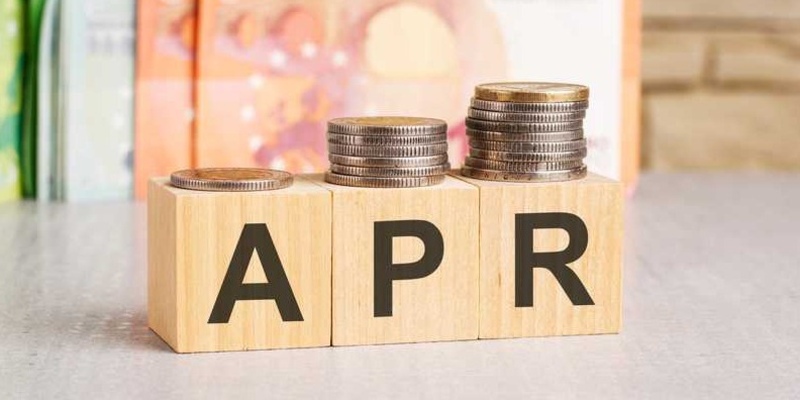Unraveling the 8 Different Types of Bankruptcy: A Comprehensive Guide
Jan 27, 2024 By Triston Martin
Bankruptcy, often viewed as a last resort for individuals and corporations grappling with insurmountable debt, comes in various forms. Each type, governed by a different chapter of the U.S. Bankruptcy Code, has unique characteristics, procedures, and implications. This guide will delve into the eight different types of bankruptcy, unraveling their intricate details, and providing a comprehensive understanding of each. Whether you're an individual facing financial hardships, a business striving to stay afloat amidst economic turbulence, or simply a reader interested in understanding financial legalities, this guide is designed to shed light on the complexities of bankruptcy, its types, and its consequences. Let's embark on this informative journey to demystify the world of bankruptcy and bring clarity to this often misunderstood legal process.
What is Bankruptcy?

Before we dive into the different types of bankruptcy, it's essential to understand what it means. In simple terms, bankruptcy is a legal process that helps individuals and businesses struggling with debt to find relief by either reorganizing their finances or eliminating some or all of their debts. It provides a fresh start for creditors and an opportunity for debtors to get back on their feet.
8 Different Types of Bankruptcy
1) Chapter 7 Bankruptcy
Often referred to as "liquidation bankruptcy," Chapter 7 bankruptcy is the most common type. It's primarily designed for individuals with little to no disposable income and businesses that don't plan on continuing their operations. In this process, a trustee is appointed to sell the debtor's non-exempt assets and distribute the proceeds to the creditors. While it offers the potential for a fresh start, it's important to note that not all debts are dischargeable under Chapter 7, such as student loans, child support, and some tax debts.
2) Chapter 9 Bankruptcy
Reserved exclusively for municipalities—which include cities, towns, and school districts—Chapter 9 bankruptcy is a rare form. This form of bankruptcy allows these entities to restructure their debts while continuing operations, much like a Chapter 11 bankruptcy for businesses. It's important to note that Chapter 9 differs from other types of bankruptcy in that there is no provision for the liquidation of the municipality's assets to repay the creditors. Instead, the municipality creates a plan to adjust its debts, often extending payment timelines, reducing the amount owed, or refinancing the debts.
3) Chapter 11 Bankruptcy
Chapter 11 bankruptcy is often referred to as "reorganization bankruptcy" and is primarily used by businesses and corporations. Unlike Chapter 7, it allows the debtor to retain control of their assets while they propose a plan to restructure their debts and continue operations. This type of bankruptcy can be complex and costly, making it more suitable for larger businesses with substantial assets. However, it can also be used by individuals with significant debt and high income levels.
4) Chapter 12 Bankruptcy
Chapter 12 bankruptcy is similar to Chapter 13 in that it allows family farmers and fishermen to restructure their debts while continuing operations. This type of bankruptcy was created specifically for these types of seasonal and fluctuating businesses, acknowledging their unique financial challenges. It provides a streamlined process and allows for more flexibility in the repayment plan.
5) Chapter 13 Bankruptcy
Chapter 13 bankruptcy is often referred to as "wage earner's bankruptcy" and is primarily designed for individuals or families with regular income who want to repay their debts over time. In this process, the debtor creates a repayment plan, typically lasting three to five years, to pay off their debts. It offers some advantages over Chapter 7 bankruptcy as it allows the debtor to keep their assets and has more flexibility in discharging certain types of debt.
6) Chapter 15 Bankruptcy

Chapter 15 bankruptcy is a relatively new type of bankruptcy that governs cases involving foreign debtors with assets or creditors in the United States. It allows for cooperation between U.S. and foreign courts, making it easier to handle cross-border insolvency cases. This type of bankruptcy is often used in conjunction with a primary form of bankruptcy, such as Chapter 7 or 11.
7) Chapter 22 Bankruptcy
Chapter 22 bankruptcy, also known as "Chapter 11 followed by Chapter 7," refers to a situation where a business or individual first files for Chapter 11 bankruptcy and then later has to file for Chapter 7. This scenario often occurs when the debtor is unable to successfully restructure their debts under Chapter 11.
8) Chapter 33 Bankruptcy
Chapter 33 bankruptcy is a term used to refer to the combination of Chapter 7 and Chapter 13 bankruptcies. In this scenario, an individual first files for Chapter 7 and then later files for Chapter 13 after receiving a discharge from their initial bankruptcy case. This allows debtors who were ineligible for Chapter 13 due to exceeding debt limits or income levels to still have the opportunity to restructure their debts.
Conclusion
As you can see, bankruptcy is a complex legal process with various types that cater to different financial situations. It's important to seek professional assistance and carefully consider all options before deciding on the best course of action for your specific circumstances. Bankruptcy should not be viewed as a quick fix or an easy way out but rather as a tool to help individuals and businesses regain financial stability. We hope this guide has provided valuable insights into the world of bankruptcy and its various types. Remember, knowledge is power, and understanding the process can go a long way in making informed decisions for your financial future.

Michigan First Home Down Payment Assistance
Feb 13, 2024
The Michigan First Home Down Payment Assistance Program is a state-run initiative designed to financially empower first-time homebuyers. By providing up to $7,500 in down payment assistance, the program enhances homeownership accessibility and affordability.

Ways To Not to Lose Money When Selling Your Home
Oct 08, 2023
Many people who are selling their houses aren't even aware of how much they owe on them, much alone how much their properties are now worth

All You Need to Know About Annual Percentage Rate
May 16, 2024
Understand the Annual Percentage Rate (APR) as it is crucial to manage finances. Learn its significance and implications in this comprehensive guide.

Sinking Funds Explained: Achieve Your Financial Goals with Ease
Sep 24, 2024
Learn how to effectively set up and manage sinking funds to achieve your financial goals without the stress of unexpected expenses.

Why is it Hard to Get Approved for a Personal Loan
Dec 25, 2023
Get over the challenges of securing a personal loan. Explore common obstacles and expert tips to improve your chances of approval

Evaluate Stock Research Websites: A Comprehensive 2024 Guide
Sep 08, 2024
To choose the best stock research analysis website in 2024. Learn key factors to consider, including data accuracy, tools, and user experience

In-depth Analysis of International Payroll to Assist You
Feb 11, 2024
Handle worldwide payments easily using an international payroll guide for smooth cross-border transactions.

What Exactly Is Bond Valuation?
Nov 03, 2023
A bond is a type of financial instrument corporations, and governments use to raise money for certain purposes. By purchasing such debt securities, investors are essentially making loans to the debtor. The bond's structure determines whether the borrower pays a fixed or variable interest rate yearly.

Exploring the Different Types of Income Tax and Their Calculation Methods
Oct 05, 2024
A comprehensive guide on different types of income tax and their calculation methods, helping individuals and businesses navigate their financial obligations effectively.

How to React When You Lose Your Wallet: 7 Must-Do Steps
Sep 16, 2024
Essential steps to take if you lose your wallet. This detailed guide covers everything from securing your accounts to replacing vital documents, ensuring you're prepared for this common mishap

What Should You Know About TIAA Life Insurance Before Getting It
May 12, 2024
TIAA initially offered educators cost-effective retirement, life, and variable performance insurances to protect against inflation.

What Is Current Price? All You Need To Know
Feb 01, 2024
The current price of a stock, currency, commodity, or precious metal traded on an exchange is the best way to figure out how much it is worth. The current price of a stock, commodity, currency, or precious metal is the most recent price at which it was sold